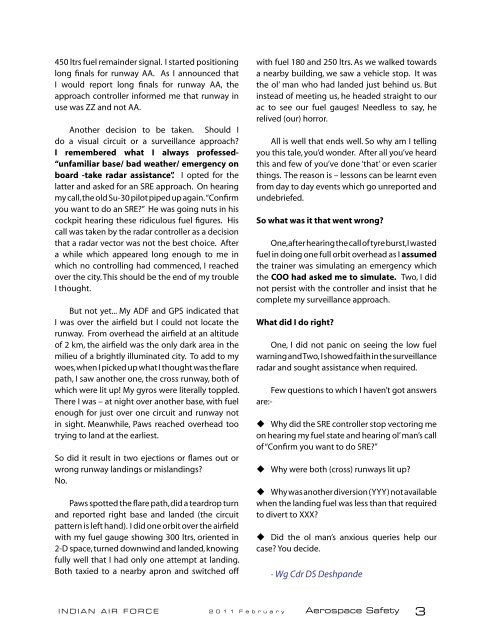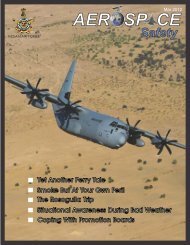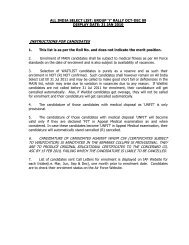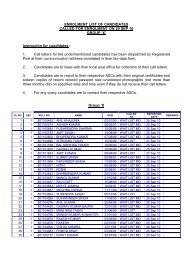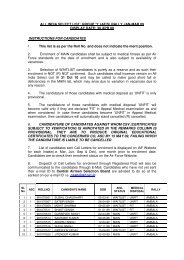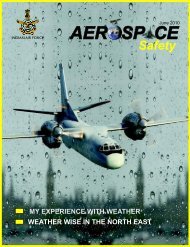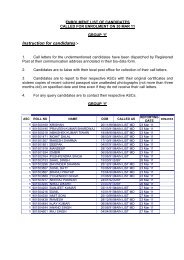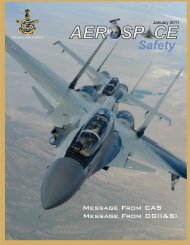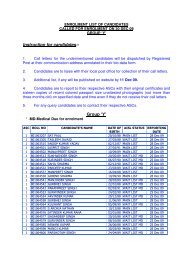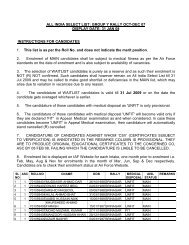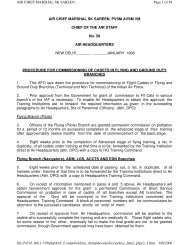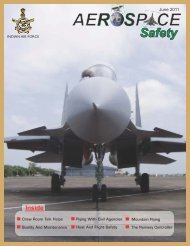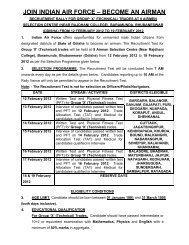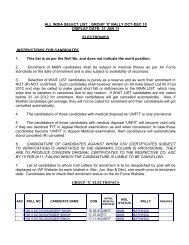February 2011 - Indian Airforce
February 2011 - Indian Airforce
February 2011 - Indian Airforce
You also want an ePaper? Increase the reach of your titles
YUMPU automatically turns print PDFs into web optimized ePapers that Google loves.
450 ltrs fuel remainder signal. I started positioninglong finals for runway AA. As I announced thatI would report long finals for runway AA, theapproach controller informed me that runway inuse was ZZ and not AA.Another decision to be taken. Should Ido a visual circuit or a surveillance approach?I remembered what I always professed-“unfamiliar base/ bad weather/ emergency onboard -take radar assistance”. I opted for thelatter and asked for an SRE approach. On hearingmy call, the old Su-30 pilot piped up again. “Confirmyou want to do an SRE?” He was going nuts in hiscockpit hearing these ridiculous fuel figures. Hiscall was taken by the radar controller as a decisionthat a radar vector was not the best choice. Aftera while which appeared long enough to me inwhich no controlling had commenced, I reachedover the city. This should be the end of my troubleI thought.But not yet... My ADF and GPS indicated thatI was over the airfield but I could not locate therunway. From overhead the airfield at an altitudeof 2 km, the airfield was the only dark area in themilieu of a brightly illuminated city. To add to mywoes, when I picked up what I thought was the flarepath, I saw another one, the cross runway, both ofwhich were lit up! My gyros were literally toppled.There I was – at night over another base, with fuelenough for just over one circuit and runway notin sight. Meanwhile, Paws reached overhead tootrying to land at the earliest.So did it result in two ejections or flames out orwrong runway landings or mislandings?No.Paws spotted the flare path, did a teardrop turnand reported right base and landed (the circuitpattern is left hand). I did one orbit over the airfieldwith my fuel gauge showing 300 ltrs, oriented in2-D space, turned downwind and landed, knowingfully well that I had only one attempt at landing.Both taxied to a nearby apron and switched offwith fuel 180 and 250 ltrs. As we walked towardsa nearby building, we saw a vehicle stop. It wasthe ol’ man who had landed just behind us. Butinstead of meeting us, he headed straight to ourac to see our fuel gauges! Needless to say, herelived (our) horror.All is well that ends well. So why am I tellingyou this tale, you’d wonder. After all you’ve heardthis and few of you’ve done ‘that’ or even scarierthings. The reason is – lessons can be learnt evenfrom day to day events which go unreported andundebriefed.So what was it that went wrong?One, after hearing the call of tyre burst, I wastedfuel in doing one full orbit overhead as I assumedthe trainer was simulating an emergency whichthe COO had asked me to simulate. Two, I didnot persist with the controller and insist that hecomplete my surveillance approach.What did I do right?One, I did not panic on seeing the low fuelwarning and Two, I showed faith in the surveillanceradar and sought assistance when required.Few questions to which I haven’t got answersare:- Why did the SRE controller stop vectoring meon hearing my fuel state and hearing ol’ man’s callof “Confirm you want to do SRE?”Why were both (cross) runways lit up? Why was another diversion (YYY) not availablewhen the landing fuel was less than that requiredto divert to XXX? Did the ol man’s anxious queries help ourcase? You decide.- Wg Cdr DS DeshpandeINDIAN AIR FORCE 2 0 1 1 F e b r u a r y Aerospace Safety 3


